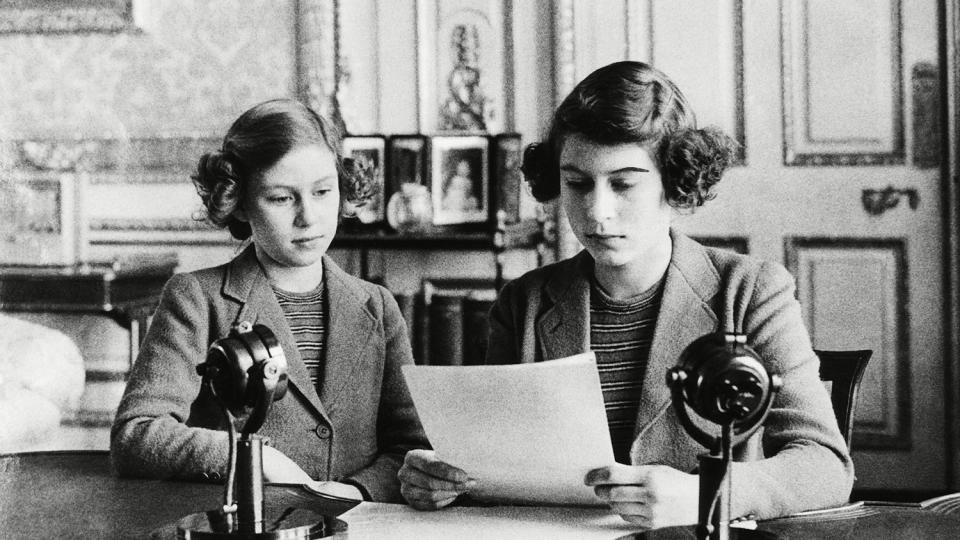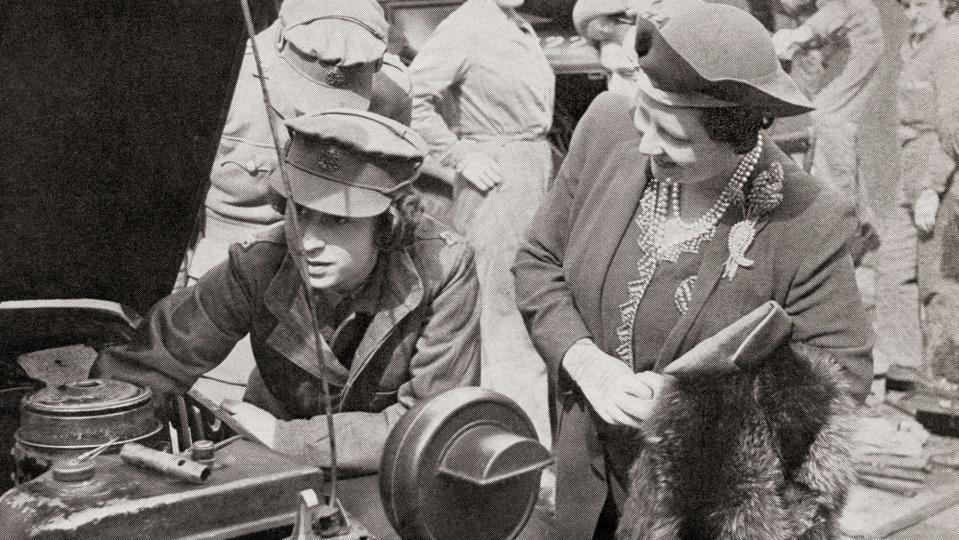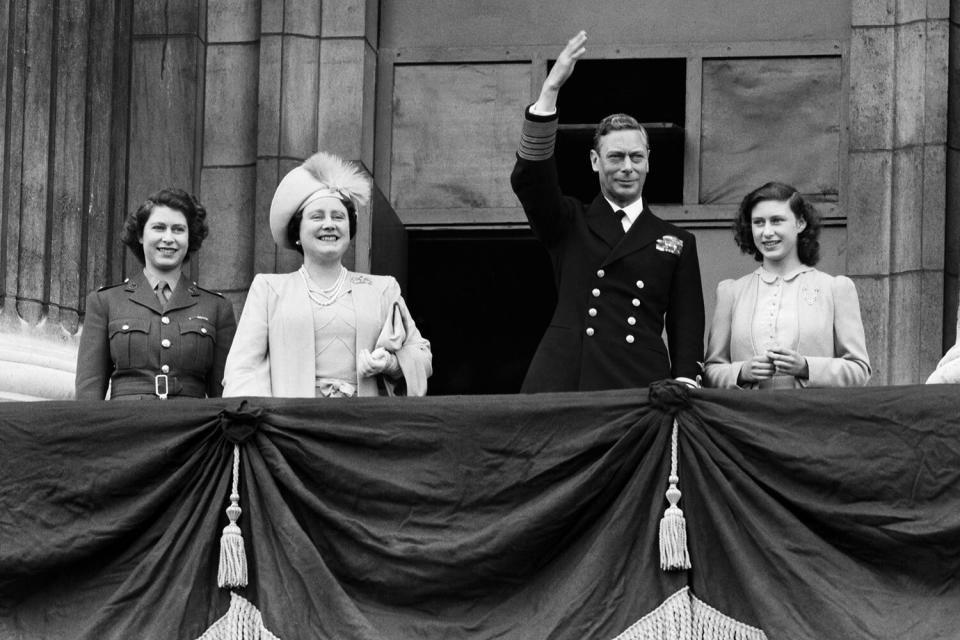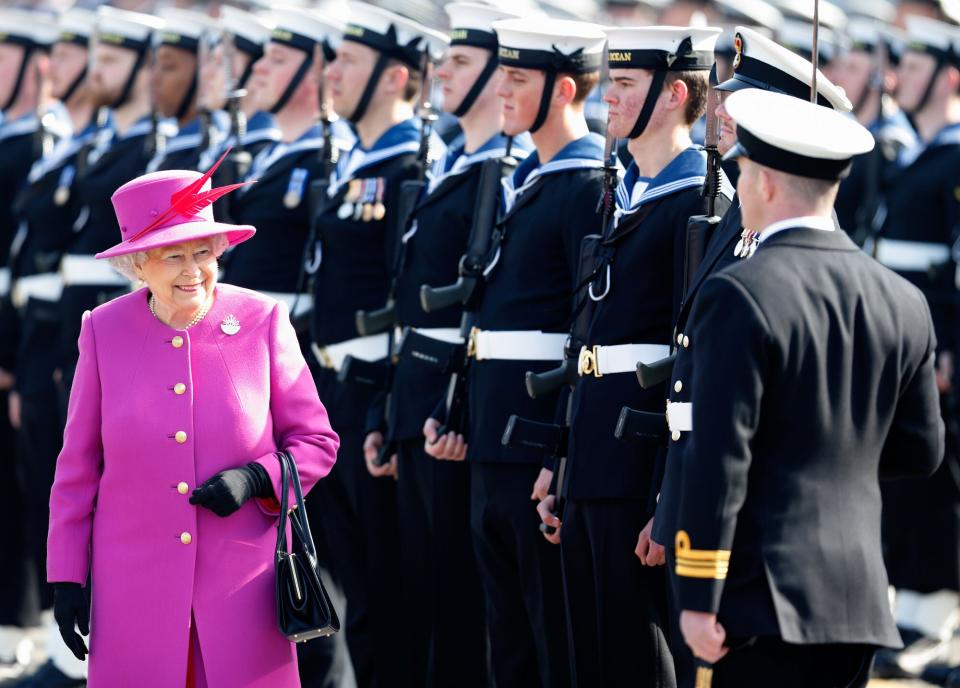Inside Queen Elizabeth's Lifelong Devotion to the British Armed Forces

British Official Photo/Alamy Princess Elizabeth
A young Princess Elizabeth was 13 years old in September 1939 when Adolf Hitler invaded Poland, triggering a devastating world war. The future monarch was swept up in a patriotic fervor that saw her become the first female member of the royal family to serve in the military — an experience that prompted her lifelong bond with the British Armed Forces.
The skies over Britain in 1940 were the scene of a brutal airborne fight between Hitler's Luftwaffe and the Royal Air Force. The renowned Battle of Britain was a make-or-break clash between Germany and the United Kingdom. Throughout Britain, millions of children and vulnerable adults were evacuated to safety deep in the countryside. The event was traumatic — and a 14-year-old Elizabeth took to the airwaves to offer moral support.
"Thousands of you in this country have had to leave your homes and be separated from your fathers and mothers," Elizabeth said on BBC's Children's Hour radio. "My sister, Margaret Rose, and I feel so much for you as we know from experience what it means to be away from those we love most of all."

Everett/Shutterstock Princess Margaret and Princess Elizabeth in 1940
After thanking the host families who opened their homes to the children, Elizabeth said: "We know, every one of us, that in the end, all will be well; for God will care for us and give us victory and peace. And when peace comes, remember it will be for us, the children of today, to make the world of tomorrow a better and happier place."
Four years later, the war still raged. Princess Elizabeth persuaded her reluctant father, King George VI, to allow her to join the military. The teenager signed on with the Auxiliary Territorial Service, donning a uniform and rolling up her sleeves to become a vehicle mechanic. She was the first female member of the royal family to serve in uniform. The British press named her "Princess Auto Mechanic."

Universal History Archive/Universal Images Group via Getty Princess Elizabeth
In photos from the day, Elizabeth poses proudly in uniform, standing alongside vehicles or working on engines.
When Germany surrendered in May 1945, Elizabeth wanted to join the throngs of people celebrating "VE Day" in the streets of London. She and Princess Margaret garnered approval from their parents and slipped out to join the revelers.
"Under the cover of darkness, the royal teenagers moved around incognito in the mass of people," the British Armed Forces wrote in a tribute after the Queen died.

Universal History Archive/Universal Images Group via Getty Princess Elizabeth
The young women danced and cheered, sang popular songs and stood at the railings of Buckingham Palace.
"We cheered the King and Queen on the balcony and then walked miles through the streets," the Queen said in a 1985 interview with BBC Radio. "I remember lines of unknown people linking arms and walking down Whitehall, all of us just swept along on a tide of happiness and relief."
The celebrations were "one of the most memorable nights of my life," she said.

Nixon & Greaves/Mirrorpix/Getty Princess Elizabeth, Queen Elizabeth, King George VI and Princess Margaret
Can't get enough of PEOPLE's Royals coverage? Sign up for our free Royals newsletter to get the latest updates on Kate Middleton, Meghan Markle and more!
Throughout the rest of her life, the Queen maintained her special bond with the British Armed Forces and their families. She created a new medal in 2009, the Elizabeth Cross, to honor the families of those who were killed after World War II in the course of military action or as the result of terrorism.
The British Armed Forces played a prominent role in commemorations following the death of Queen Elizabeth on September 8 and rehearsed by night for her state funeral.

Max Mumby/Indigo/Getty Queen Elizabeth
The United Kingdom's service chiefs, led by Chief of the Defence Staff Admiral Sir Tony Radakin, stood vigil at the Queen's coffin in Westminster Hall last week, where they paid their respects to the late sovereign.
In a nod to the Queen's ties to the people of her armed service, the Monday guest list included military heroes. Among them were seven Victoria Cross and 10 George Cross medal recipients, according to the British Armed Forces.


